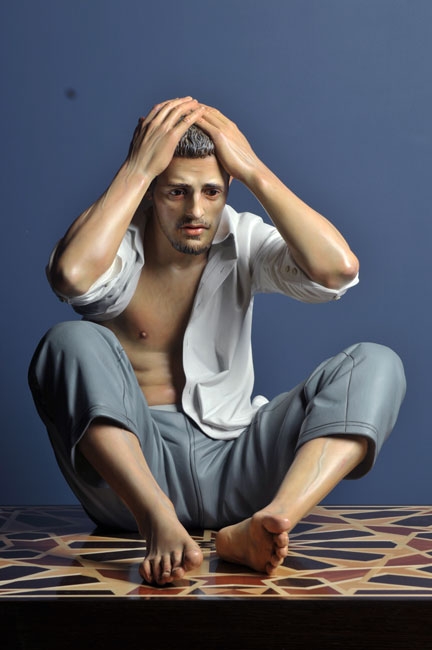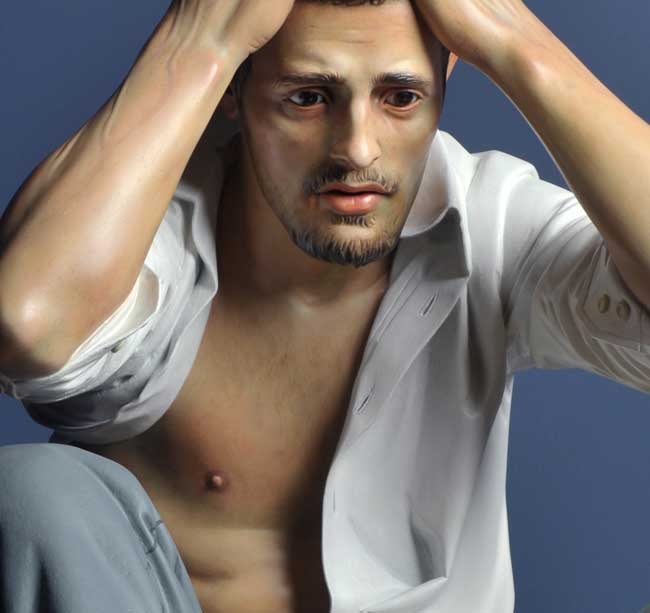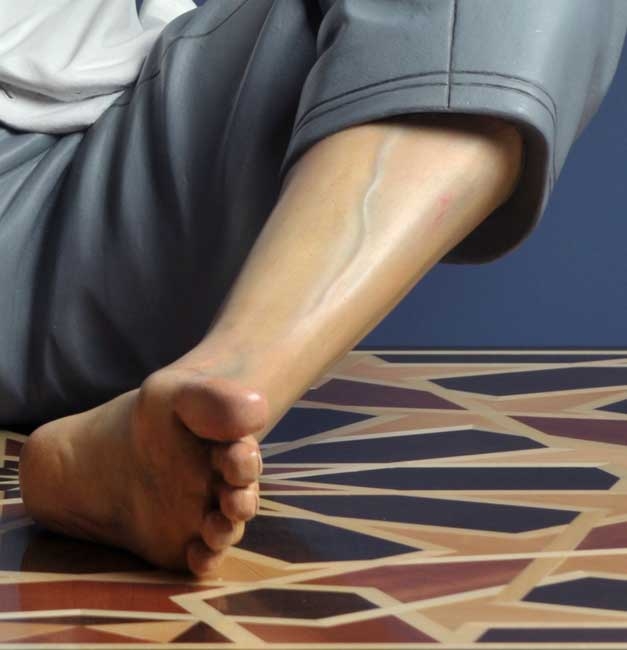Reza Aramesh’s art is sourced from the images of conflict, war and hostage taking feature daily in the news. Hostilities, passions and dramas so powerfully expressed in the media have inspired the Iranian artist to create a corpus of gestures and poses that recur as a motif in an oeuvre that is alternately photographic and sculptural. By photographing live tableaux or by wooden sculpture, Reza Aramesh revives images gathered from the world’s press to produce what he calls “Actions”.
The painted wooden sculpture Action 103 is based on the arrest of an Iraqi civilian in February 2006 by his country’s special police force. Face to the wall, the young man holds his arms above his head in an ambiguous pose, perhaps from fear as much as resignation. Vulnerable and abandoned, as if summoned by the after-life, the figure drawn into this posture and this face carries a religious dimension. Inspired by the iconography of the 17th Century, the golden age of Spanish statuary and its representations of saints and martyrs, the artist isolates his subject from all exterior elements in order to concentrate the effect. So no weapons, or any other signs bear witness to the violence of the scene. From this “decontextualisation” an archetypal figure has been created, frozen into a pose that seems timeless. Only one or two physical clues: his clothes, his haircut, allow any rapid understanding of the circumstances portrayed.
Cut from a single block of wood with traditional tools and materials, this sculpture forms part of a series produced in Italy in a long-established workshop that specializes in church statuary. The hyper-realistic figure is raised slightly above ground on a plinth inlaid with marquetry, specially made in the United Kingdom, its complex geometric pattern evoking the traditional ornamental floors of Islamic tradition.
Translated by Theodora Taylor.




Follow us on: